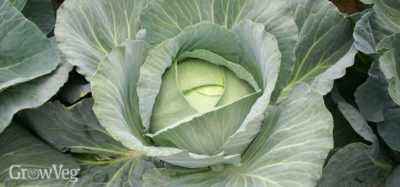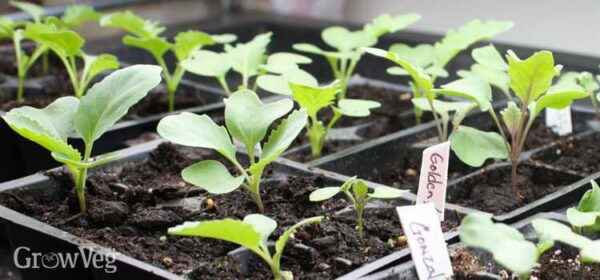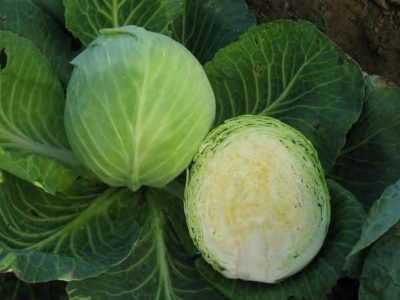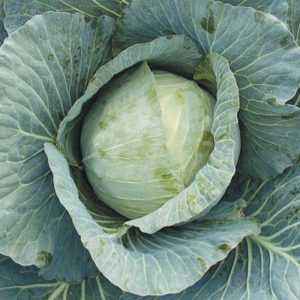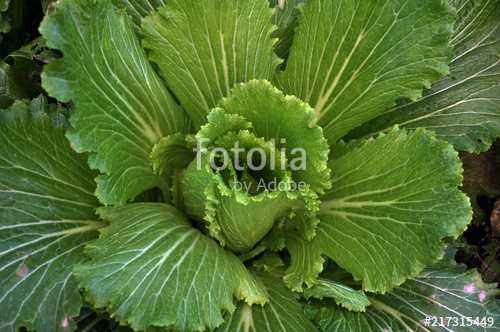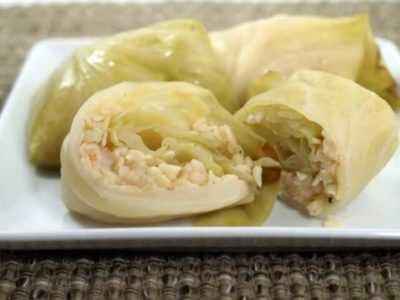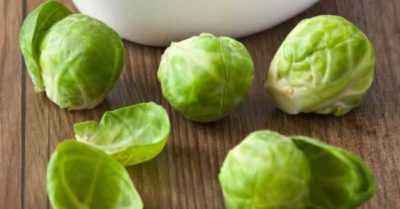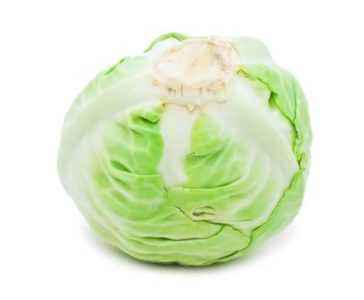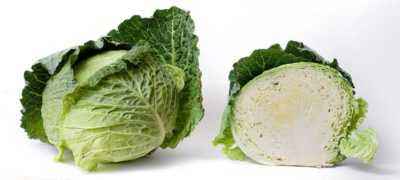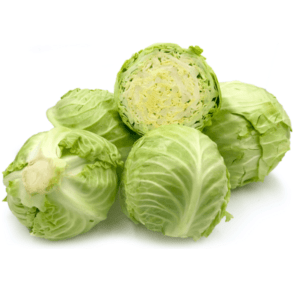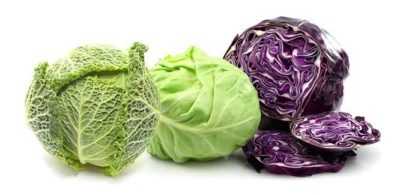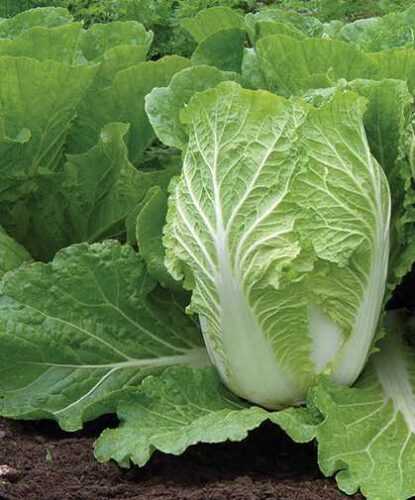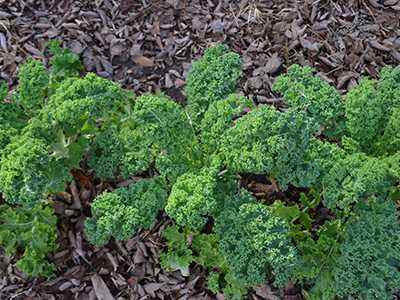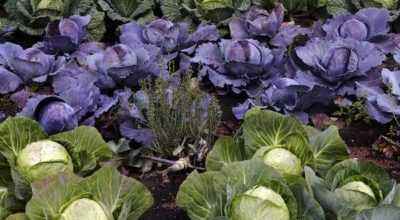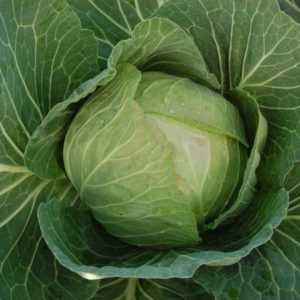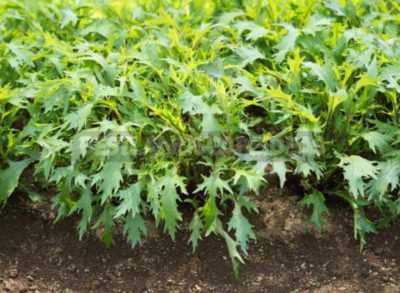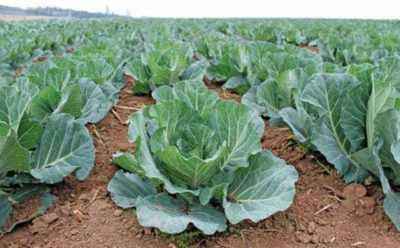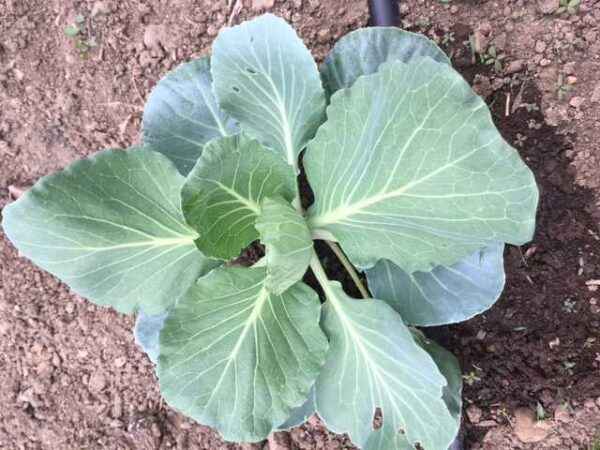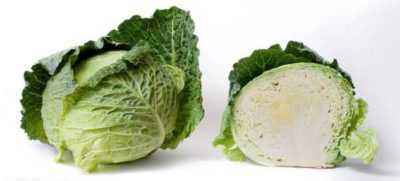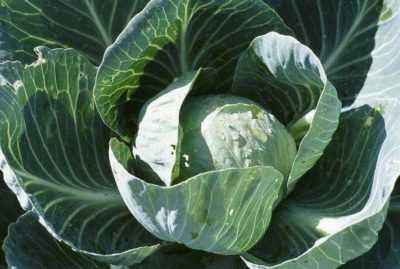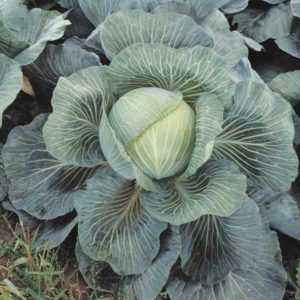The cultivation of a vegetable crop, the homeland of which is not known for certain, was still practiced in Russia. Fiber-rich cabbage is an effective way to normalize the digestive tract. In winter, it helps to prevent the appearance of vitamin deficiency. These are not the only advantages of a vegetable crop, but they are already enough to acquire a row of green heads of cabbage in a personal plot.Growing a vegetable rich in vitamins and microelements has its own characteristics, therefore it is so important to know how to care for this garden crop.
- Variety Selection
- Preparation of seed
- Calibration <
- Germination rating
- Disinfection
- Hardening
- Growing seedlings
- Important points
- Cultivation of cabbage in the open field
- Planting seedlings in the ground
- Care for planting mi
- Disease Prevention
- Useful Properties
- Application <
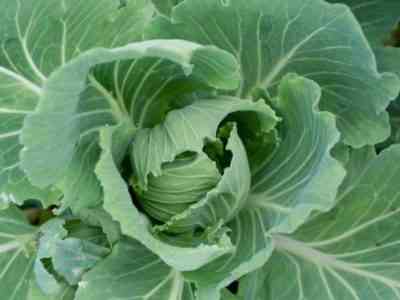
Growing technology cabbage
Variety selection
Before planting cabbage is determined with the variety. Recently, cone-shaped vegetable crops and varieties with red leaves are gaining popularity.
Hybrids are developed that are not afraid of diseases that affect cruciferous crops. On the shelves there are hybrids of domestic selection adapted to the climatic conditions of the country. Also, seeds of Dutch and German selection have established themselves well in the market. It is better to stop the choice on frost-resistant varieties.
When choosing seeds of white cabbage pay attention to the ripening of the vegetable. Ultra early, early and early ripe varieties have a short shelf life, but early cabbage is a sweet and tender vegetable. Mid-ripening and late-ripening hybrids, according to the description, are distinguished by good keeping quality.
Pay attention to the purpose of the vegetable crop: some varieties, due to their excellent taste, are suitable for fresh consumption, and some open when pickled, pickled or canned .
Preparation of seed material
Regardless of the method of growing cabbage, the technology for preparing seed material remains unchanged and includes several stages:
- calibration;
- germination rating ty;
- disinfection;
- hardening.
Calibration
Some seeds may not be suitable for cultivation, therefore, carry out the selection. Seeds are dipped in salted water for 5-7 minutes. Salt solution is prepared at the rate of 3 g of salt per 100 ml of water. All hollow seeds float to the surface. They are washed from salt and dried as soon as possible so that they do not sprout.
If the size of the cabbage seeds in the bundle varies, small planting material is also discarded at the calibration stage.
Germination rating
To find out if a good crop can be obtained from cabbage, it is advisable to evaluate the germination rate, which will take 7 days.Take part of the seeds that will not be used during planting.
Place a cloth moistened in water on the tray and lay the seeds on it. On top of the seeds lay the same fabric soaked in water. Samples are left in a room with an air temperature of 22 ° C-23 ° C. Make sure that the fabric covering the seeds is always wet. Instead of fabric, it is permissible to use paper that does not absorb water well.
After 3-4 days, the first shoots appear, after 7 days all the seeds that must sprout sprout. On the 4th day, you can understand how friendly the germination of the replacement material is, and on the 8th – how many plants will sprout as a whole.
To obtain indicative results, it is advisable to test on 100 samples.
You can reduce the cost of the process by independently collecting planting material. The vegetable is propagated by seeds, which can be obtained by planting queen cells (heads of cabbage obtained from seeds) in the ground. Propagation of the vegetable takes 2 years. Choose a head of cabbage that has good weight and a small stump. If the mother liquor weighs little, then the seeds will be weak. At the place of each inflorescence, after flowering, pods similar to asparagus beans are formed. In them are the seeds. It is important that, after the culture has bloomed, pollination takes place. To do this, ensure the presence of bees on the plot. If the culture does not bloom, produce artificial pollination.
Disinfection

Seeds before disinfect by planting
So that cabbage grown from seeds does not hurt, they must disinfect planting material. There are several effective methods for disinfecting seeds.
The most commonly used solution is potassium permanganate, in which planting material is immersed for a quarter of an hour. After time, the seeds are washed. A solution of potassium permanganate is an excellent remedy for diseases of a fungal and bacterial nature.
An alternative to soaking in a solution of potassium permanganate is the so-called blanching. The seed material is placed in an improvised bag made of gauze, folded in 3-4 layers. The bag is immersed in water at a temperature of 49 ° C for 20 minutes, after which the seeds are removed and dried.
The last method of disinfection involves the use of garlic. It will take 100 ml of pure water and about 30 g of pre-chopped garlic. The ingredients are mixed, seeds are placed in the resulting composition. After 60 minutes they are removed and dried.
Hardening
In order for the cabbage to be healthy, it is imperative to harden the seed material. For this, planting material is placed in a container with water and sent for a day to a room with an air temperature of 2 ° C. The best option is a refrigerator.
Growing seedlings
Cabbage is a plant that is afraid of frost, so cabbage is planted in open ground very rarely. If an assessment of germination was made, germination of seeds can not be dealt with. Otherwise, germinated seeds should be planted. They germinate in 3-4 days.
Cabbage seedlings are grown in containers. There are containers that are a system of connected cups, and there are simply rectangular containers. When working with the first, each seed is planted in a separate cup. When sowing seeds in rectangular containers, the distance between future plants is 3 cm. The distance between the rows is 7-8 mm. The containers are covered with foil and placed in a warm and sunny place.
If the seeds were planted in a common container, after 7 days they are transplanted into containers, where for each plant there is a separate cell 30 x 30 mm in size. After 14-20 days, another transplant is made into 60 x 60 mm cups. When transplanting insufficiently strong plants, they are buried to cotyledon leaves. The plant is transplanted with a basal earthen lump. In cups, plants are located immediately before planting in the ground.
Early cabbage needs to be fed. The first is produced 14-15 days after emergence. At this stage, ammonium nitrate, superphosphate and potassium fertilizer are used in amounts of 2, 4 and 1 g. The dry mixture is diluted in 1 liter of water.
The second top dressing is carried out in 14-15 days after the first. It consists of the same components taken in a double dose. The last top dressing is done 48 hours before disembarkation. For its preparation, they take the same components, but in amounts of 2, 4 and 8. They are diluted in 1 liter of water.
For planting seeds and transplanting seedlings, special soil is used, which is sold in specialized stores.
Important points
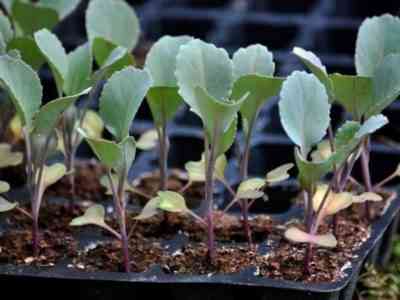
Seedlings must be hardened
- When growing seedlings, it is important to observe the temperature regime. Before emergence, the air temperature should be 20 ° C, after – 17 ° C during the day and 10 ° C at night.
- So that the cabbage does not hurt, the seedlings are hardened. To do this, it is taken out to the balcony during the day, first for 15-20 minutes, then for 30-40 minutes. Before planting in the ground, plants are kept on the balcony for about 2.5-3 hours. During hardening, they are placed so that they are not exposed to direct sunlight.
- A few days before disembarkation, cabbage can be on the balcony for the whole night, but if the air temperature at night drops below 2 ° C, plants should be brought into the room. Leaving the cabbage with cabbage overnight on the balcony, they are covered with plastic wrap.
Cultivating cabbage in the open ground
Cabbage goes through a series of stages before harvesting: transplanting in open ground, care.
Planting seedlings in the ground
It is important to plant annual plants in the ground in a timely manner. At the same time they are guided by weather conditions.
Early cabbage is planted in late April or early May. At the time of planting, 5-7 cabbage leaves should be formed. The height of the plant should be about 15 cm. Mid-ripening and late-ripening varieties are planted in the middle and end of May. At the time of planting, 4-6 cabbage leaves should be formed in the plant. Plant height – 17-18 cm.
If at the time of planting the plants did not reach the desired height and the required number of leaves did not form, you can use growth stimulants.
To grow strong plants from cabbage, which has not yet had time to grow stronger, they plant it on a lighted area. Loamy and sandy soils are most suitable for a vegetable crop. It is advisable to plant this vegetable crop after root crops, cucumbers, legumes or crops. Before planting a vegetable crop (both cabbage and other plants are no exception), it is advisable to plant green manure on the site. You can cover immature plants with bottles.
In order to get a good harvest from the cabbage planted in the country, you can not thicken the plantings. It is important to strictly adhere to the planting scheme indicated on the package with seeds. For different varieties, it is slightly different.
So that the cabbages do not hurt and have good taste, during planting seedlings put humus, wood ash and ½ tsp in the holes. nitrofoski. The contents of the well are mixed, then a seedling with a root lump is placed in it.
Care for planting
Special care for cabbage is not needed. Agricultural technology is reduced to timely watering, cultivation and removal of weeds. It will be useful to feed the vegetable crop several times.
When the cabbage leaves are growing, the plant is fed with ammonium nitrate (1 g of saltpeter per 1 liter of water). When forming head of cabbage leaves, a solution prepared from urea, superphosphate and potassium sulfate taken in 4.5 and 8 g, respectively, is applied to the soil. The dry mixture is diluted in 10 l of pure water.
It is not recommended to pick off the lower leaves of the plant. Only leaf blades affected by pests or diseases must be removed.
Disease Prevention
It is important that insects that destroy the leaves are not wound up in the cabbage. As a prophylaxis against parasites that settle on cabbage leaves, wood ash is used. Sometimes tobacco dust is added to it.
The first cap They grow it without the use of fungicides, insecticides and herbicides: the fetus absorbs toxins, therefore, for the preventive treatments they use folk remedies that are easy to make with your own hands. This can be an infusion of onion peel.
No less effective is the infusion of tomato tops, which you can cook with your own hands in 15-20 minutes. Before using any infusions made with your own hands, you need to let them brew. The risk of parasite attack is minimized when growing cabbage with odorous flowers and herbs (marigolds, cilantro, sage, caraway seeds, etc.).
If a specific disease has manifested, use a drug designed to treat it. Complex preparations are less effective.
According to the latest technologies, cabbage of any kind can be grown hydroponically. The covering method is expensive, but the cost of heads of cabbage will justify the costs. With this method, you can skip the stage of growing seedlings.
Useful properties
Our great-grandfathers knew about the useful properties of cabbage, using it since ancient times to treat diseases . Today, cabbage juice of various kinds or slurry from leaves containing iron, fiber, calcium, iodine and other useful trace elements is used in traditional medicine to treat gout, cough, sore throat, sore throat, bronchitis and kidney diseases. Also, the healing properties of vegetables help people relieve headaches. If your head hurts, you can attach a cabbage leaf to your temples. It is advisable to pre-mash it so that the juice appears. The medical effect is explained by the fact that the head usually hurts with high or low blood pressure, and the potassium contained in the cabbage leaves normalizes blood pressure.
Fresh cabbage leaves can be considered as a remedy for bruises. Vegetables are used in folk medicine and to normalize the functioning of the nervous system.
Application
Cabbage contains from 15 to 30 kcal, depending on its variety, therefore it is a dietary product.Least of all kcal in Beijing.
It is best to eat fresh cabbage. Also, it can be pickled, make sauerkraut. You can simply cut the head into slices, season with butter and spices to taste. This is the easiest recipe. Such food is not only healthy, but also delicious. Cabbage is combined with rice, so you can make cabbage rolls.


